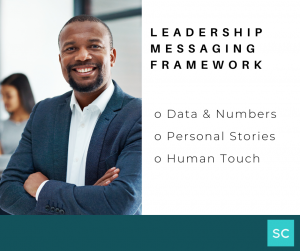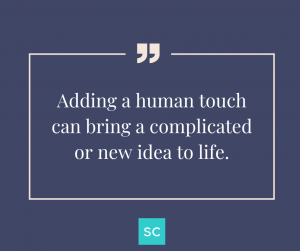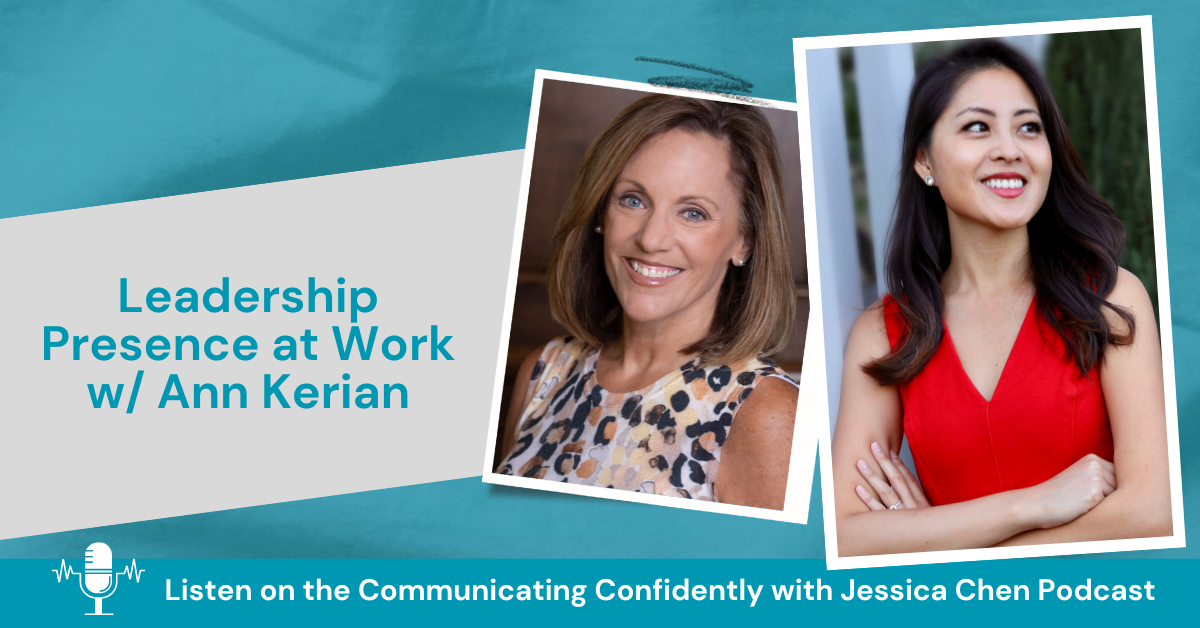Leadership Messaging Framework
Take a peek at some of the most impactful messaging strategies out there. What’s interesting is that they often share a few common ingredients. These elements typically consist of data and numbers, real-life examples, and a touch of humanity. A recent study found that 40 percent of organizations want to beef up their data-driven marketing budgets. So, it’s pretty clear that data plays a crucial role in messaging.
Now, let’s talk about how we can up our own communication game by incorporating these elements into our leadership messaging.
1. Data and Numbers
Let’s talk about how we can supercharge our messaging with some hard-hitting data and numbers. You see, these little digits can really give our message that extra punch, making it more convincing. So, how do we sprinkle some data magic into our leadership communication?
Consider the following:
- Percentages – A great way to add data and numbers to our messages is to use a percentage. If our fantastic new product is all about saving people time, we can say something like, “Hey, check this out – 82% of folks who’ve given our product a whirl have noticed a serious boost in their efficiency.” See how that works? By putting a number on it, we make our message crystal clear for everyone to grasp.

- Ratio – Ratios can be another easy way to make our messaging click with folks. Think about it like this: you’ve likely heard that “9 out of 10 dentists recommend a certain brand of toothpaste…” – it’s a classic example. Sometimes, ratios can do the trick even better than percentages, depending on the impact we want to create.
- Money – Money is a powerful communicator. When our team manages to save some cash for the company or our clients, we have to let everyone know. Picture this: “Last quarter, we slashed $50,000 in overhead costs by making the smart move to the Xyz program.” Now that’s a message that sticks, backed up by solid facts like money saved.
When we sprinkle some data and numbers into our message, it’s like giving it a credibility boost.
2. Previous Examples
Weaving in past examples can be a game-changer when we’re trying to simplify tricky concepts. If our idea’s a bit of a head-scratcher, tapping into a familiar example can make our message crystal clear.
Consider the following:
- Familiar Example – Using products or services that are already out there, like familiar things or products on the market, can help people get our ideas. Let’s say we’re rolling out a shiny new product with a similar setup to another successful business. We can totally hitch our wagon to that business, using it as a point of reference to grab people’s attention and recognition.
- Competitor – When we’re thinking about using a competitor as our previous example, we’ve got to play it smart. If our rival is, let’s say, another streaming service that’s got a lower price tag and a boatload of viewing options, we might not want to line ourselves up against them. But here’s the twist: if we bring something unique and super valuable to the table that our competitor doesn’t, well, then it’s worth considering that comparison.
You know, relying on past examples is a great way to make those tricky ideas much easier to grasp.
3. Human Touch
Adding that human touch helps us tap into our audience’s emotions. And let’s be real, when folks feel a certain way about us or our message, it’s way more likely to stick in their minds.
Consider the following:
- Personal Stories – Personal stories take us on a journey right from the moment a customer steps in, through their whole experience with our product or service, and even after. What’s cool is that these stories have the power to pull at our heartstrings, helping us drive home the message we want to share. Plus, they’re gold when it comes to boosting our credibility and making our message stand tall.

- Testimonials – Testimonials often contain a few sentences that spill the beans on why they’re head over heels for what we offer. You see, heartfelt testimonials are like the secret ingredient that adds that extra dash of humanity and can really tug at the heartstrings of our audience. And if our product or service has made a significant impact on our clients’ lives, you betcha we should be shouting it from the rooftops in our messaging.
- Quotes – Quotes are like the bite-sized version of testimonials, perfect for packing a punch in our messages. These little gems can be effortlessly dropped into any message to really drive home the point we’re making. Now, when we’re on the hunt for quotes, they’ve got to be concise and laser-focused on reinforcing our message. Here’s the deal: if a quote sounds like, “I really liked using xyz service,” well, it’s not going to pack much of a punch, right? But when you’ve got a quote that goes, “Using xyz service has changed my life! It makes my day-to-day world much easier to live in,” now that’s the kind of quote that leaves an impression. It shows our audience that we’re all about changing lives, and that’s something they won’t forget in a hurry.
You know, when we sprinkle in a little human touch, it’s like bringing a complex or brand-new idea to life.
When we toss in some data, sprinkle in a few past examples, and add that human touch to our messaging, it’s like turning up the volume on compelling and impactful storytelling for our audience.
__
Whenever you’re ready, there are 3 ways we can help you:
- Discover your communications style so you know where to start. Over 4,000 people have found theirs here.
- Attend our monthly communication workshop to build communications confidence (new topics: public speaking, advocating for yourself, building credibility, etc) here.
- Get your brand in front of 43k+ people by sponsoring our newsletter or Soulcast Media | LIVE LinkedIn events [contact: hello@soulcastmedia.com]











